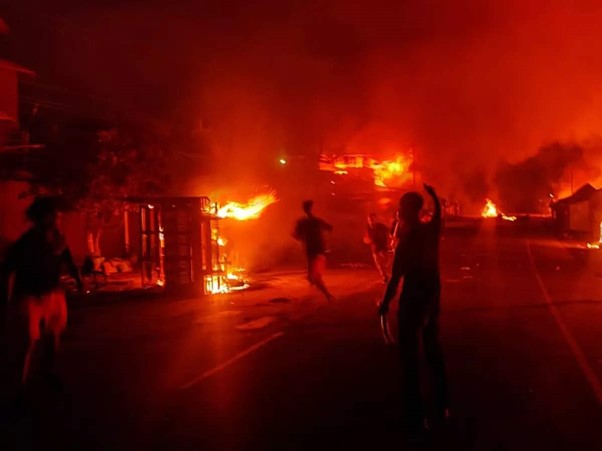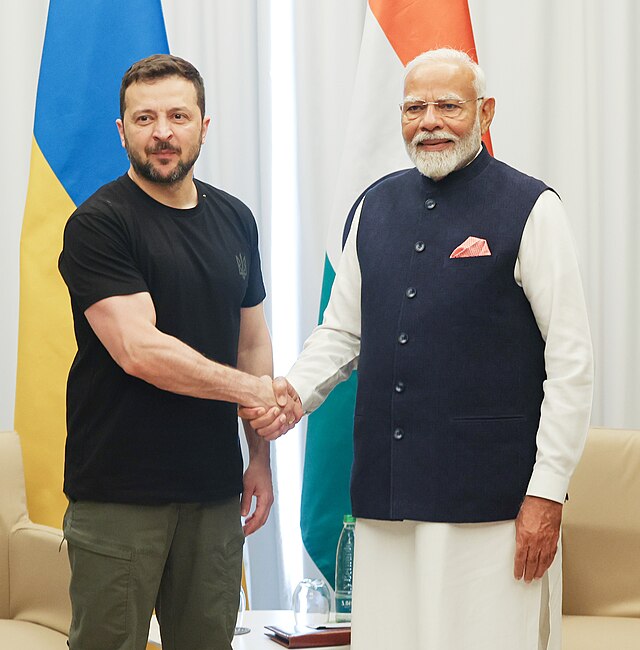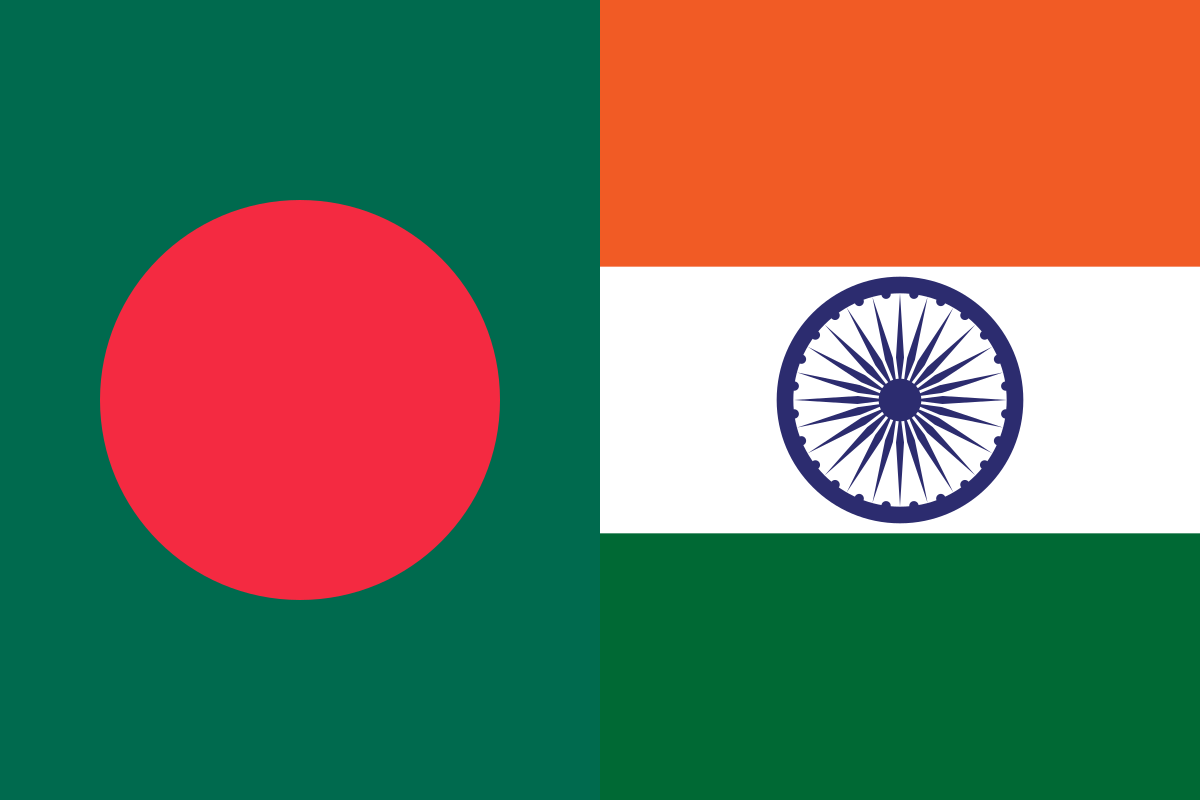
Understanding Manipur Dynamics

Manipur was merged fully with the Indian Union on October 15, 1949, but it became a full-fledged state more than two decades later, in 1972. Manipur is known for its ethnic and cultural diversity. But the state has been plagued by internecine conflicts among different ethnic groups and tribes.
The State is home to the Meiteis, the major ethnic group in the state who embraced Hinduism in the seventeenth century. The Meiteis constitute more than 50 percent of the population but occupy only one-tenth of the State’s area.
There are about 30 different tribes inhabiting Manipur. Some of the larger tribes include Nagas, Kukis, Paites, Thadous, Simtes, Vaipheis, Raltes, Gangtes, and Hmars. Unlike the Meiteis, who occupy the Imphal Valley, these tribes generally inhabit the surrounding hill districts.

The state suffers from problems related to separatist insurgency, ethnic strife, and religious divide. The root cause of these are as follows:-
- Separatist Insurgency. The 23-year delay between the merger with the Indian Union and the grant of statehood caused discontent among the Meiteis who felt that their identification with ‘Hindu India’ brought them no political or economic benefits. This gave rise to secessionist tendencies among a section of the Meiteis and a number of separatist groups emerged thereafter.
- Ethnic Strife. The entire state’s polity remains polarised along ethnic lines. In addition to Meitei, Kuki, and Naga rebel groups, several other tribes, such as the Paite, Vaiphei, and Hmars have also launched their own groups over a period of time. There are frequent internecine conflicts, between the tribes and their groups.
- Religious Divide. Some locals perceive that domination by outsiders (migrant Muslims) is largely affecting their economic and social growth.
Background: Separatist Insurgency
Genesis (1964). On November 24, 1964, United National Liberation Front (UNLF) was founded by Samarendra Singh to achieve independence and establish a socialist society.
Pakistan Backing (1968). In December 1968, a breakaway group of the UNLF, led by Oinam Sudhir Kumar, established a government-in-exile called Revolutionary Government of Manipur (RGM) with headquarters in Sylhet, in the then East Pakistan. The RGM was backed by Pakistan. The primary objective of the RGM was to ‘liberate’ Manipur through an armed struggle. The RGM maintained an elaborate underground organisation. Its administrative and civil set-up included a home minister, a finance minister, a foreign minister, and an army chief of staff with Sudhir Kumar as General Secretary.
Crack Down (1971). The Meitei secessionist movement received a serious jolt when most of its leaders were arrested during the Bangladesh liberation war in 1971. The movement gradually fizzled out with the rest of the leaders accepting the amnesty offered by the then Chief Minister of the State, R.K. Dorendro Singh.
China Backing (1975). Some of the Meitei rebels were detained in Tripura jails in the company of Naxalites-left-wing extremists. They got indoctrinated there into Maoist thought. In 1975 after their release from jail, a team of Meitei rebels went to Lasha in Tibet, to seek Chinese assistance. The team returned to Manipur in 1976 after receiving extensive training in guerrilla warfare. On September 25, 1978, Bisheswar formed the People’s Liberation Army (PLA) to achieve independence through armed struggle.
Mushrooming of Insurgent Groups (1977-80). Apart from the formation of the PLA, in the late seventies and early eighties, Manipur witnessed the growth of a number of Meitei underground organisations with similar objectives. Some of them were:
- People’s Revolutionary Party of Kangleipak (PREPAK) led by R.K. Tulachandra in 1977.
- Kangleipak Communist Party (KCP) in 1980.
- Lesser known insurgent groups such as Poirei Liberation Front (1979), Meitei State Committee, and United People’s Revolutionary Socialist Party.
Stepped Up Activities (1979-81). Meitei insurgents stepped up their activities during 1979-81. They unleashed a violent campaign looting banks and treasuries and killing many security force personnel.
Containment (1980-82). In order to tackle the situation, the entire Imphal Valley was declared a disturbed area, and the Armed Forces (Special Powers) Act, 1958, was imposed on the Valley in September 1980. On October 26, 1981, the PLA, PREPAK, and the KCP were notified as unlawful organisations. Subsequently, most of the leaders and the cadres were arrested or got killed. Security forces also succeeded in destroying several bases of the Meitei insurgent groups. Following these setbacks, the PLA failed to keep up the momentum, though sporadic low-level violent activities continued. But other Meitei insurgent groups PREPAK and the KCP found it difficult to recover from the losses suffered during counter-insurgency operations.
Resurgence (1989). By the end of the eighties, Manipur was once again engulfed in insurgency. Meitei extremist groups, particularly the PLA, stepped up their activities. Importantly, the PLA reorganised itself and formed a political wing called the Revolutionary People’s Front (RPF) in 1989. The RPF sought the secession of Manipur from India. The RPF established a government-in-exile in Bangladesh’s Sylhet district, with Irengbam Bhorot Singh as the president. The RPF had a vice president, a general secretary, and secretaries in charge of various departments: home, finance, foreign affairs, publicity and communications, social welfare, health, and education. The armed wing of the RPF was similarly reorganised along the lines of a disciplined army. The PLA had set up two camps in Myanmar and five in Bangladesh. Reports indicate that about a thousand PLA recruits received arms training in these camps. The PLA also formed a united front of Meitei extremists called the Revolutionary Joint Committee (RJC) along with PREPAK and KCP.
Change of Approach
In its bid to enlist the support of the people, the PLA launched an armed campaign against social evils. It took to enforcing total prohibition and gunning down rapists, besides launching a vigorous drive against drug peddlers, in the early nineties. Moreover, Meitei insurgent groups sought to project a pan-Mongoloid identity. They rejected the Bengali script, which they believed suppressed their language and culture. To assert their separate identity, they revived the practices of the old Meitei religion – Senamahi.
Background: Ethnic Strife
Meiteis Against Hill Tribes. Hill tribes enjoy certain privileges like job reservation, protection of their lands from the settlement, and ownership by non-STS, even from other Manipuris. This has been strongly resented by the Meiteis who perceive that the hill tribes are garnering benefits disproportionate to their population.
Naga Groups. While Meitei outfits remain active in the Imphal Valley, the major Naga insurgent group – National Socialist Council of Nagaland–Isak-Muivah (NSCN-IM), is operative in the Naga-inhabited areas in four of Manipur’s five hill districts, namely, Ukhrul, Senapati, Tamenglong, and Chandel. The NSCN-IM used the Ukhrul district particularly (where its leader Muivah was born) as a base for collecting funds and recruiting cadres. The NSCN-IM carried out several attacks in Manipur in the nineties.
Nagas Against Kukis. These two major tribal groups have a conflict and a bitter struggle to control drug trafficking and smuggling of contraband through the border town of Moreh. The NSCN-IM controlled this illegal commerce till the Kuki-Naga clashes erupted in 1992. The Kukis captured it from the Nagas, but the NSCN-IM remained determined to drive its rivals out of Moreh, as well as out of Kuki settlements in the Naga-dominated hill districts. The conflict resulted in the death of nearly a thousand people and an enormous loss of property. Over 2,000 houses were burnt and hundreds of villages were affected.
Kukis Against Paites. Violence between the Kukis and the Paites had peaked in 1997-98, when clashes claimed over 1,000 lives, with 4,600 houses torched and hundreds of thousands of rupees worth of property destroyed. However, the violence subsided after the signing of an agreement between their leaders in October 1998.
Background: Religious Divide
Religious Angle (1993). The Pangals or Manipuri Muslims who constitute over seven percent of the population were considered as Mayangs (outsiders settled in Manipur). Locals perceived that domination by outsiders was largely responsible for their slow economic and social growth. In May 1993, more than 90 people were killed in a series of clashes between the Meiteis and Pangals, in Thoubal and Imphal districts. Reports indicate that the People’s Republican Army (PRA) which was set up in the early nineties instigated the communal clashes.
Bangladesh Link. Reports also suggest that a section of the Pangals established links in Bangladesh and with Pakistan’s Inter-Services Intelligence (ISI) for weapons and other assistance. Besides, a number of new outfits such as the People’s United Liberation Front (PULF), North East Minority Front (NEMF), Islamic National Front, Islamic Revolutionary Front (IRF), and United Islamic Liberation Army (UILA) been formed in order to protect their community.
Insurgency / Militancy Related Aspects
- The insurgency, militancy-related incidents, and ethnic clashes keep flaring up often, disturbing the peace in the state.
- In the last thirty years, there have been thousands of fatalities due to these unrests. Almost 50% of the fatalities are of the cadres of several groups. Rest 50% comprise security forces and civilians.
- In 2016, the Ministry of Home Affairs sent additional 4,000 paramilitary personnel to control the turmoil. The security forces are further sent when the situation demands.
- The groups operating in the state often resort to economic blockades as a part of the protest. These blockades cause severe hardship in the landlocked state due to the disruption of the supply of essential commodities.
- The Union government periodically initiates efforts to hold talks with the groups to find a compromise and solution to the prevailing problems.
- The state is often notified as a “disturbed area”, with the imposition of the Armed Forces Special Power Act (AFSPA). This is another bone of contention between the government and the insurgent/militant groups.
The simmering discord prevalent in the state causes periodic violence and has the potential to adversely impact the security situation in the state in particular and in the North-East region in general.
Current Flare Up
A shoot-at-sight order has been issued, a curfew has been imposed and internet services have been temporarily suspended in the state, as violence has broken out in Manipur between Imphal Valley-based Meiteis and the hill-based Kukis.
A high court direction to the state government on the inclusion of Meiteis in the Scheduled Tribes category is the latest cause of the violent situation. Seeking an ST tag, the Meiteis have said they are facing difficulties due to “large-scale illegal immigration by Myanmarese and Bangladeshis”. The tribals, including Nagas, Zomis, and Kukis, have opposed this and held protests to “protect tribal interests”.
A mass rally “solidarity march” organised by the All Tribal Students’ Union Manipur (ATSUM) in protest against the demand for inclusion of the state’s Meitei community in the Scheduled Tribe (ST) category turned violent in an area bordering Bishnupur and Churachandpur districts.
The Rapid Action Force has been deployed along with the Army, CRPF, Assam Rifles, and state police to contain the violence. So far, 9,000 people have been rescued by the forces from the violence-hit areas, and given shelter.
Immediate action has been taken to contain the situation; however, a long-term solution is required to bring peace to the state.
*********************************************************************************************************************
References:
- https://www.ndtv.com/india-news/manipur-unrest-which-led-to-army-being-called-in-explained-in-5-points-4003693
- https://indianexpress.com/article/north-east-india/manipur/curfew-internet-curbs-after-manipur-protest-against-meiteis-st-tag-demand-turns-violent-8590104/
- https://www.indiatoday.in/india/story/manipur-violence-tribals-protest-meiteis-kukis-clash-timeline-of-events-2368651-2023-05-04
- https://en.wikipedia.org/wiki/Insurgency_in_Manipur
- https://www.opindia.com/2023/05/everything-you-need-to-know-about-manipur-violence-by-tribal-groups-opposing-st-status-demand-by-meitei-community/
- https://www.studyiq.com/articles/history-insurgency-manipur-free-pdf/
Disclaimer
The opinions expressed in this article are the author’s own and do not reflect the views of Chanakya Forum. All information provided in this article including timeliness, completeness, accuracy, suitability or validity of information referenced therein, is the sole responsibility of the author. www.chanakyaforum.com does not assume any responsibility for the same.
Chanakya Forum is now on . Click here to join our channel (@ChanakyaForum) and stay updated with the latest headlines and articles.
Important
We work round the clock to bring you the finest articles and updates from around the world. There is a team that works tirelessly to ensure that you have a seamless reading experience. But all this costs money. Please support us so that we keep doing what we do best. Happy Reading
Support Us





















POST COMMENTS (0)